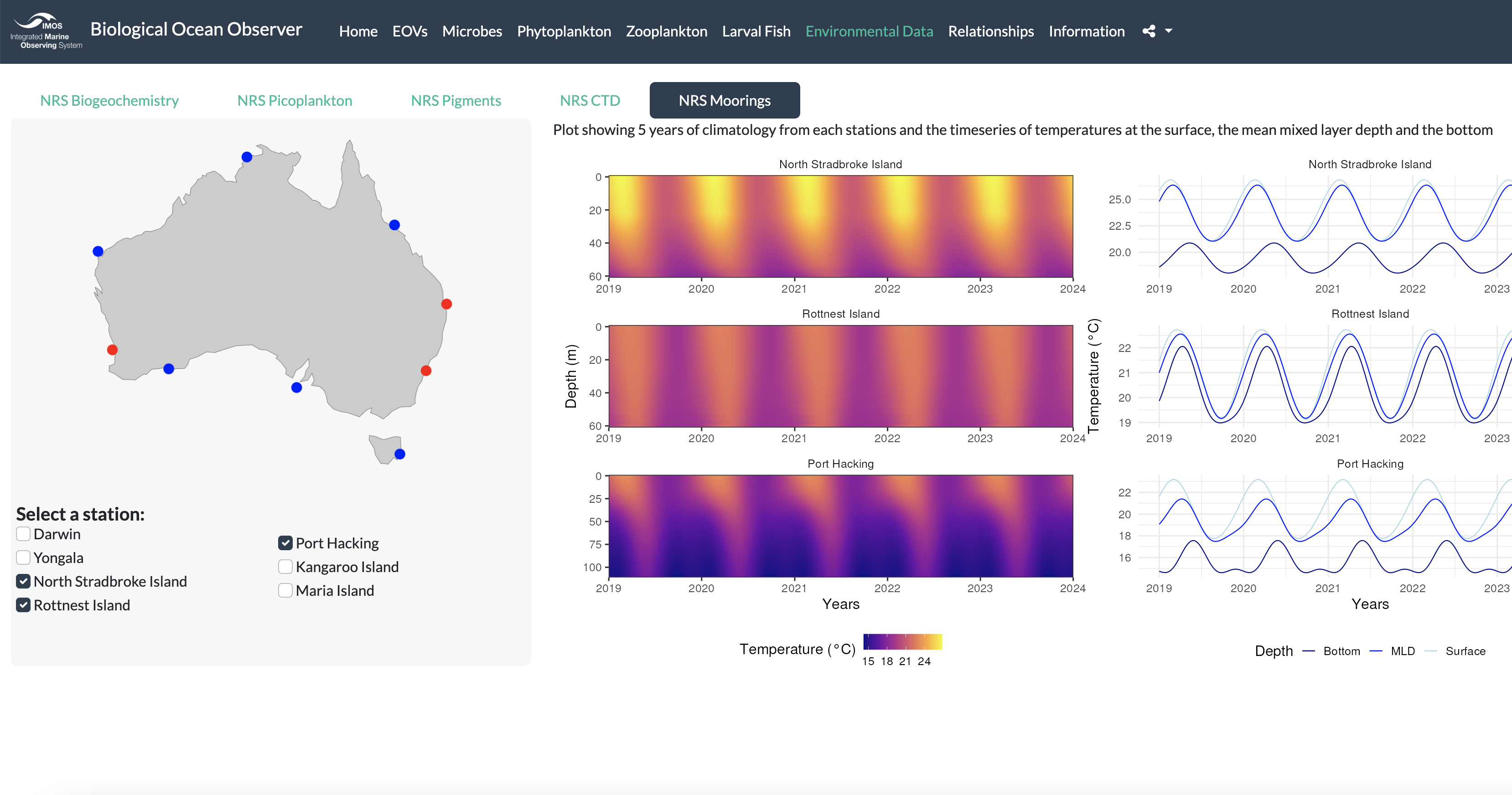The Biological Ocean Observer is a website that integrates, analyses and visualises data collected from IMOS platforms around Australia including the network of National Reference Stations, Continuous Plankton Recorders, Ships of Opportunity and coastal monitoring sites.
Access to online marine data streams has never been easier, however, the number of files and range of formatting creates complexities around data download, integration and visualisation – and not everyone has the necessary skills to make use of the data resources available. Jason Everett (University of Queensland, CSIRO and University of NSW) and Claire Davies (CSIRO), through the IMOS New Technology Proving capability, have developed the Biological Ocean Observer platform to simplify these processes for all data users.
The platform quickly allows the user to explore temporal and seasonal trends through plots for phytoplankton, zooplankton, larval fish and microbial data. In addition, the user can plot physical data collected at the National Reference Stations including biogeochemistry, CTD and nutrient parameters.
The Biological Ocean Observer uses internationally recognised programming frameworks (R and Shiny), with all code freely available, facilitating further development and collaboration within the community.
Exploring temporal trends
Scientists and policy makers commonly need to quantify temporal and seasonal trends at specific locations or within bioregions, to enable policy decisions. The Biological Ocean Observer allows users to quickly and easily plot these trends for both the IMOS National Reference Stations and Continuous Plankton Recorder tracks around Australia. The biological data includes observations of phytoplankton, zooplankton, larval fish and microbes.
Microbial Ocean Atlas
An important part of the Biological Ocean Observer platform is the Microbial Ocean Atlas. The Microbial Ocean Atlas has been created in partnership with fellow NCRIS capabilities the Australian Research Data Commons (ARDC) and Bioplatforms Australia. The Atlas integrates highly specialised genomic data with physical ocean data to ensure greater accessibility of molecular microbial data to a broad range of researchers.
Accessing non-biological data
In addition to the biological data the Biological Ocean Observer allows the user to plot the biogeochemistry, CTD and pigments from the IMOS National Reference Stations. Many of these data are depth-resolved to enable the creation of vertical profiles through the water column.
Who should use the Biological Ocean Observer?
The platform is designed to be used by a broad range of stakeholders, including researchers, natural resource managers, policy makers, educators, students and the general public.
“IMOS is focussed on providing greater accessibility to the wealth of data we collect around Australia, and to finding innovative ways to deliver this data to support and broaden our user base,” says IMOS Director Michelle Heupel.
“The IMOS Biological Ocean Observer makes it easier for marine scientists, marine industry users, policy makers and the broader public to view and analyse trends in biological data to help them understand the Australian ocean estate.”
